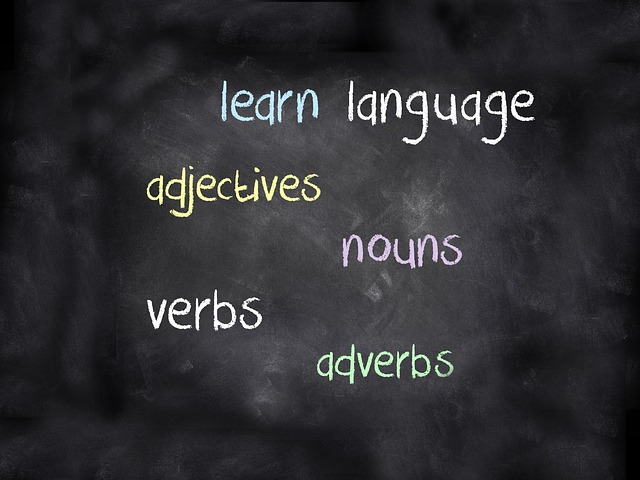Read time : 3 mins
Level : Advanced

By Caitriona Maria | Wealth of Geeks undefined
The language learning app industry is a rapidly growing market, projected to grow from $3.14 billion in 2021 to $16.6 billion in 2031. With more options available than ever, now is a great time to learn a new language.
I’m a bilingual translator and I checked out the six most popular learning apps on the market. Instead of evaluating technical aspects like interface and speed, I focused on the app’s didactic approach. In other words, can a person learn a new language using an app like Duolingo?
The method was simple: download the apps and start from the most basic level in Spanish. A week-long performance evaluation, using the app daily and making mistakes like a novice.
Babbel: Best in Class
Of all the apps reviewed, Babbel touts itself as offering the “most holistic” approach to online language learning. I think a better adjective is “realistic.”
While most apps track progress through levels and paths, Babbel lessons are organized according to the Common European Framework of Reference for Language (CEFR) levels. This foreign language proficiency scale indicates which official certificate a student might qualify for. Note that the 14 languages offered are entirely European, with the sole exception of Indonesian.
Babbel focuses on providing students with the fundamental building blocks to learning a language: understanding words’ meaning, spelling, and grammar. The quality of additional content students can access sets the app apart. The conversation scripts hone speaking skills, the podcasts enhance listening comprehension, and the cultural magazine dedicates itself to the language.
The app’s biggest drawback may be a deal-breaker for most casual users. Babbel’s free version is more of a trial: the app only offers one free lesson per language. Anything more requires a financial investment, making it an app for committed students interested in obtaining an official certification.
Busuu: Best for a Peer-Reviewed Experience
At first, Busuu seems to have all the expected features of a language-learning app. Choose from 14 languages, set a learning goal, and proceed with a limited number of short lessons daily. Then, students practice basic interactions, like checking into a hotel, that helps them acquire everyday phrases and vocabulary.
The interesting twist? Students are also able to learn from each other. They submit their responses to prompts like “Share a funny story.” These are then corrected by fellow app users who are native speakers of that language.
I believe that those who thrive in a classroom setting will enjoy the peer review feature. Online learning can often feel like a solitary endeavor, but Busuu transforms it into a collaborative effort between all its users.
HelloTalk: Best for Real Conversation Practice
One of the pitfalls of learning apps is limited opportunities to practice with actual people, not AI chatbots. Enter HelloTalk, a language-learning app that advertises itself as “the ultimate language exchange.”
Users create a profile detailing which languages they speak, their age and location, and their interests and hobbies. Others can then find them using the Connect feature or the Moments feed, populated with posts from other language learners. From there, users can message each other through the app. Those who want to practice speaking can also benefit from Voicerooms or live-streaming with other students.
Although the app includes many features to facilitate conversation, like a translator and an AI-powered grammar check; most expanded versions are behind a paywall. The same goes for booking sessions with live tutors, pro conversation partners, one-on-one livestreams, and more.
While great for practicing conversation, HelloTalk is best used as a supplementary tool by those already on the language-learning journey.
Drops: Best for Acing Vocabulary Quizzes
Acquired by the game-based learning platform Kahoot in 2021, Drops’s tagline is ” learning made easy.” For those seeking to expand their vocabulary, this app certainly fulfills that promise.
Users learn new words through a series of short, minutes-long sessions that involve simple memory games. The app keeps track of the vocabulary learned, which users can later review through various other activities.
Drops offers the most languages of all the apps reviewed — 50 in total, with the possibility to learn different languages simultaneously. The only drawback? Users on the free version are limited to one 5-minute session every 10 hours. Zealous learners who want to participate in the ambitious in-app challenges might need to upgrade to a paid version.
Overall, Drops is a helpful review tool — the 2023 equivalent of flipping through a deck of flashcards. However, do not expect to become fluent by studying with only this app.
Memrise: Best for Colloquialisms and Slang
Memrise is not like a regular language-learning app. It’s cool. This “coolness” is best evidenced by the app’s liberal use of short-form videos reminiscent of TikTok or Instagram Reels.
Memrise’s didactic approach is primarily based on “scenarios.” The app shows clips of everyday conversations, like ordering a coffee, with native language speakers. Students then learn and memorize the phrases involved. Additional scenarios include viral content and music videos in the language of choice. Those interested in learning Spanish can expand their vocabulary with the lyrics to Bad Bunny’s “Un x100to.”
While unorthodox, Memrise’s strength resides in its unusual feature where users learn to speak one of its 23 languages like “real people” do. This might be the perfect app for current students who want to freshen up their skills, or those who need an educational alternative to their nightly social media binge.
Duolingo: Best for Fun, Low-Commitment Learning
No review of language-learning apps is complete without Duolingo. The app is a market powerhouse, topping all App Store charts. Its green owl mascot has 8.2 million followers on TikTok alone.
Duolingo’s popularity can be attributed to its ability to reliably deliver as promised: quick, game-like lessons that can easily fit into a 10-minute break. Users can accumulate in-app points, gems, and chests and earn badges and achievements. They can obsess over their streaks, or the number of consecutive days with lessons completed, and join leagues like Pokémon Trainers.
Nonetheless, Duolingo’s gamification of language learning sometimes comes at the cost of the learning aspect. On the free version, users who make too many errors lose hearts (i.e., lives) and must wait hours to try the lesson again. And what new student does not make mistakes?
Competition and positive reinforcement is the name of Duolingo’s game. It is perfect for those who want to switch from their Candy Crush addiction to a language-learning high.
Which App Should I Choose?
Unfortunately, success in learning a new language depends on various factors, many of which are beyond an app’s control. Some people learn best through listening, while others retain information better through scripted scenarios. There is simply no one-size-fits-all solution.
However, there is one quality all students must have: consistency. Daily streaks are more than bragging rights. Students must keep logging in to see results. That’s why the most crucial question when choosing a language learning app should be: “Can I commit to this?” Select the app, or even a combination of apps, that increases the likelihood of success.
This article was produced by TPR Teaching and syndicated by Wealth of Geeks.
